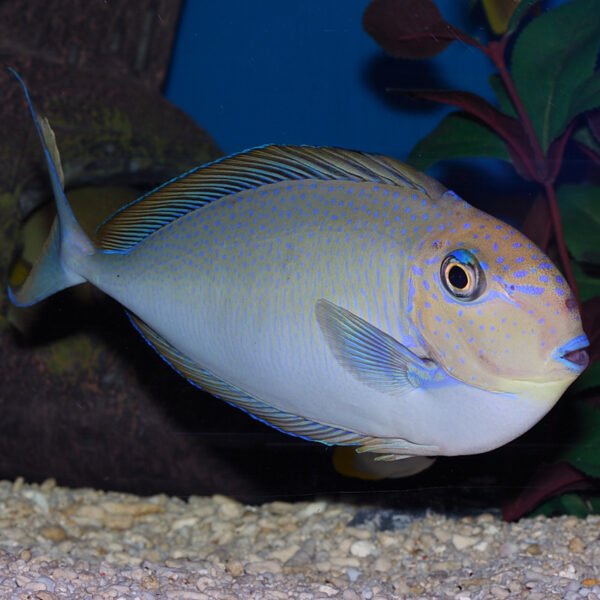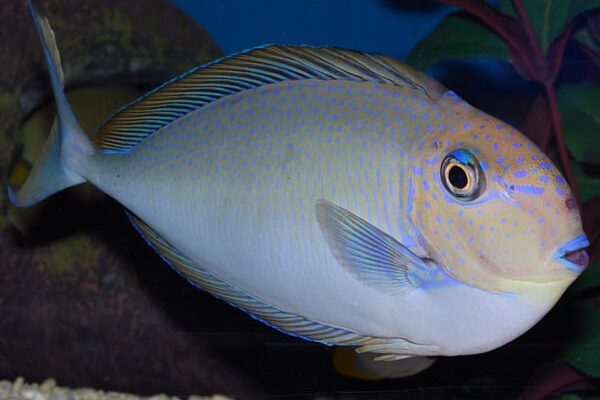
Vlamingii tangs are primarily found in the warm waters of the Indo-Pacific region. To understand their habitats better, we should take a closer look at the specific oceans, types of reefs, and conditions they thrive in. After all, knowing where these tangs exist will help you appreciate their role in the ocean ecosystem and even their upkeep in aquariums. Let’s dive in!
Indo-Pacific Ocean: The Primary Habitat
The Indo-Pacific Ocean is where Vlamingii tangs mainly reside. Think of this vast body of water as a treasure chest of biodiversity. It stretches from the east coast of Africa to the western shores of the Americas, encompassing a range of ecosystems that help these fish flourish.
Vlamingii tangs particularly enjoy the warm, clear waters found in this region. The temperature typically ranges between 24 and 28 degrees Celsius (75 to 82 degrees Fahrenheit), which is just right for their well-being. If you ever get a chance to snorkel or dive in these areas, you might spot them in coral reefs, where they come to live and feed.
The reefs provide not just shelter but also a buffet of algae, which is their primary food source. These tangs are like nature’s lawnmowers, helping to keep algae growth in check and promoting coral health. The relationship they have with their environment is a perfect example of how different species coexist and depend on each other.
Coral Reefs: A Colorful Community
Coral reefs are magical underwater cities bustling with life, and Vlamingii tangs are among their most colorful residents. These fish thrive in both fringing reefs—those that grow close to shore—and barrier reefs, which are farther out from the land.
You might be wondering why they prefer these locations. Coral reefs are rich in nutrients and provide shelter for various marine life. The tangs enjoy nibbling on algae that grows on the coral, which helps them stay healthy and vibrant. Picture a bustling restaurant where every meal is fresh and made-to-order—that’s how Vlamingii tangs experience their coral environments.
Interestingly, the health of these reefs directly impacts the population of Vlamingii tangs. When reefs are damaged by pollution, climate change, or overfishing, the fish’s habitat suffers. This illustrates how interconnected life in the ocean can be, and it highlights the importance of protecting coral ecosystems.
Geographic Range: From East Africa to the Pacific Islands
Vlamingii tangs have a wide geographic range, primarily found from the eastern coast of Africa to the pristine waters of the Pacific Islands. Countries like Kenya, Madagascar, and the islands of Indonesia and the Philippines are all part of their playground.
You might find them swimming around the Great Barrier Reef in Australia or the coral atolls of the Maldives. These locations are not just beautiful but are crucial for the survival of many marine species, including Vlamingii tangs. Across this vast area, these fish adapt to different habitats while still maintaining their core needs for warmth and food.
This adaptability is fascinating! It’s like being a traveler who can thrive in various environments, making friends wherever they go. The ability to move across such a large area allows them to dodge threats and find better food sources, ensuring their survival amidst changing conditions.
Habitats Beyond Coral Reefs
While coral reefs are the star of the show, Vlamingii tangs can also be found in other habitats. They often inhabit mangroves, seagrass beds, and sandy bottoms alongside reefs.
These environments may not seem as glamorous as coral reefs, but they play a vital role in the ecosystem. Mangroves, for example, serve as nurseries for many fish species. Vlamingii tangs can often be spotted here during their juvenile stages, enjoying the safety these dense roots provide.
Seagrass beds are another fantastic habitat. They offer plenty of food and cover for fish, creating a rich environment for growth. Imagine lush underwater meadows where Vlamingii tangs dart between blades of grass, munching on algae and detritus. It’s another layer of their life that emphasizes their versatility and the rich variety in their habitats.
Impact of Environmental Changes
Environmental changes, such as rising ocean temperatures and pollution, significantly affect Vlamingii tangs and their habitats. Coral bleaching—when corals lose their vibrant colors and turn white—occurs when temperatures rise, stressing the corals and making them less hospitable for tangs.
Let’s face it: when their homes are impacted, Vlamingii tangs face challenges. Reduced food sources and shelter lead to declining populations. That’s why protecting our oceans and raising awareness about marine conservation is critical.
If you’ve ever seen a vibrant coral reef, you know how important it is to keep these ecosystems healthy. Initiatives like sustainable fishing and pollution reduction can help preserve the habitats where Vlamingii tangs live, ensuring that future generations can appreciate their beauty.
So there you have it—Vlamingii tangs are fascinating fish found primarily in the warm, inviting waters of the Indo-Pacific, particularly around coral reefs and other coastal habitats. Their role in maintaining the balance of these ecosystems is not just essential but a beautiful example of how interconnected life is underwater.
Understanding where they live and how environmental changes affect them helps us appreciate these colorful fish even more. By taking steps to protect their habitats, we can help ensure they continue to thrive for years to come. The vibrant underwater world they inhabit needs our care, and every little action can make a difference. Let’s keep the oceans sparkling, colorful, and full of life!

